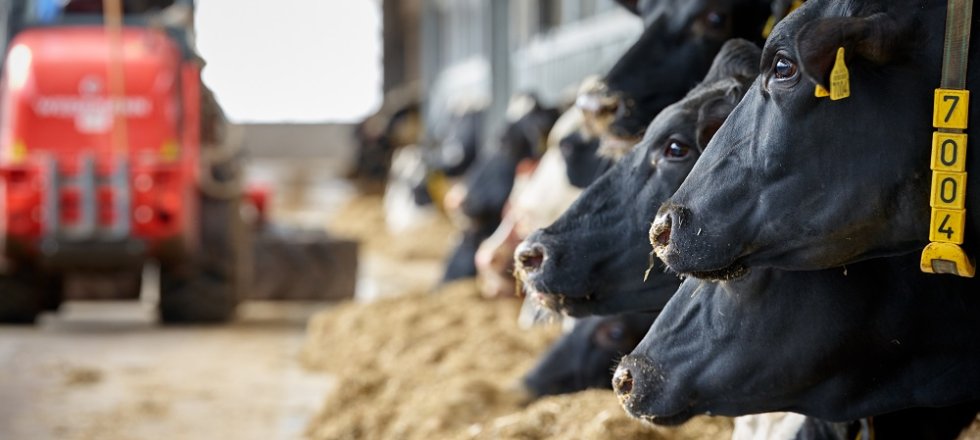Climate-Smart Livestock Farming Practices
Climate smart livestock farming is an important aspect of sustainable agriculture. It is essential for reducing greenhouse gas emissions, conserving resources, and ensuring the long-term viability of the livestock industry. In this post, we will explore the concept of climate smart livestock farming and discuss various ideas, recommendations, and practices that can help farmers and the industry as a whole.

Climate change is a pressing issue that affects various sectors, including agriculture. The livestock sector is a significant contributor to greenhouse gas emissions, primarily through methane emissions from enteric fermentation and manure management. However, by adopting climate smart farming practices, farmers can reduce the environmental impact of their operations.
One of the key principles of climate smart livestock farming is to mitigate greenhouse gas emissions. This can be achieved through various means, such as improving feed efficiency, implementing better manure management techniques, and utilizing renewable energy sources on farms. By reducing emissions, farmers can contribute to global efforts to combat climate change.
Another important aspect of climate smart livestock farming is adaptation. As climate change leads to more extreme weather events, farmers need to adapt their practices to ensure the resilience of their operations. This can involve implementing measures to protect animals from heat stress, managing water resources efficiently, and diversifying livestock breeds to withstand changing conditions.
What is the best way to start implementing climate smart livestock farming practices? Farmers can begin by assessing their current operations and identifying areas where improvements can be made. This can involve conducting a greenhouse gas inventory, evaluating energy usage, and analyzing feed and nutrition strategies. By understanding the current state of their operations, farmers can then develop a plan for implementing climate smart practices.
Ideas For Climate Smart Livestock Farming
There are various ideas and practices that farmers can consider when it comes to climate smart livestock farming.
1. Implementing rotational grazing systems: Rotational grazing allows for the optimization of forage utilization, reduces overgrazing, and promotes healthy pasture growth. It also sequesters carbon in the soil, thereby helping to mitigate climate change.
2. Utilizing renewable energy sources: Farmers can explore the use of solar panels, wind turbines, and anaerobic digesters to generate clean energy on their farms. This not only reduces greenhouse gas emissions but also provides a more sustainable source of energy.
3. Enhancing feed efficiency: Livestock farmers can improve feed efficiency by using high-quality feed, optimizing feed formulations, and employing precision feeding techniques. This reduces methane emissions and minimizes resource wastage.
4. Implementing manure management techniques: Proper manure management is crucial for minimizing greenhouse gas emissions. Farmers can adopt techniques such as anaerobic digestion, composting, and applying manure to fields at optimal times to maximize nutrient utilization and reduce environmental impact.
5. Investing in technology: The use of technology can help farmers monitor and manage their operations more efficiently. For example, sensors can be used to track animal health and behavior, and automated systems can control lighting and ventilation in barns. This allows for better resource management and reduces energy consumption.
Recommendations For Climate Smart Livestock Farming
Based on research and best practices, here are some recommendations for farmers looking to adopt climate smart strategies:
1. Seek advice and guidance: Farmers can benefit from consulting with agricultural experts, researchers, and fellow farmers who have experience in climate smart livestock farming. These individuals can provide valuable insights and help tailor strategies to specific farm conditions.
2. Keep up with scientific advancements: The field of climate smart agriculture is continually evolving, with new technologies and practices being developed. Farmers should stay informed about the latest research and advancements to ensure they are implementing the most effective strategies on their farms.
3. Collaborate with stakeholders: Climate smart livestock farming requires collaboration and partnerships with various stakeholders, including government agencies, research institutions, and supply chain actors. By working together, farmers can leverage resources and knowledge to implement sustainable practices more effectively.
Listicle of Climate Smart Livestock Farming Practices
- Implementing rotational grazing systems
- Utilizing renewable energy sources
- Enhancing feed efficiency
- Implementing manure management techniques
- Investing in technology
- Promoting biodiversity on farms
- Adopting precision farming techniques
- Capturing and utilizing methane emissions
- Using cover crops to improve soil health
- Reducing water usage through efficient irrigation
Question & Answer
Q: How can climate smart livestock farming contribute to greenhouse gas reduction?
A: By implementing practices that reduce methane emissions, optimize resource usage, and promote carbon sequestration, climate smart livestock farming can help mitigate greenhouse gas emissions.
Q: What are the economic benefits of climate smart livestock farming?
A: Climate smart practices can improve farm efficiency, reduce input costs, and enhance the resilience of operations. By adopting sustainable practices, farmers can also access new markets and meet consumer demand for environmentally friendly products.
Summary of Climate Smart Livestock Farming
Climate smart livestock farming involves adopting practices that mitigate greenhouse gas emissions and promote adaptation to a changing climate. By implementing rotational grazing systems, utilizing renewable energy sources, enhancing feed efficiency, and implementing proper manure management techniques, farmers can contribute to sustainable agriculture. Seeking advice, keeping up with scientific advancements, and collaborating with stakeholders are key to successful implementation. Climate smart livestock farming not only benefits the environment but also improves farm efficiency and opens up economic opportunities.
In conclusion, climate smart livestock farming is crucial for a sustainable and resilient agriculture sector. By incorporating climate smart practices, farmers can reduce their environmental footprint, mitigate greenhouse gas emissions, and adapt to a changing climate. The ideas, recommendations, and practices discussed in this post provide a starting point for farmers looking to embrace climate smart strategies. With collective efforts and ongoing innovation, the livestock industry can play its part in addressing climate change and ensuring a more sustainable future.



Post a Comment for "Climate-Smart Livestock Farming Practices"